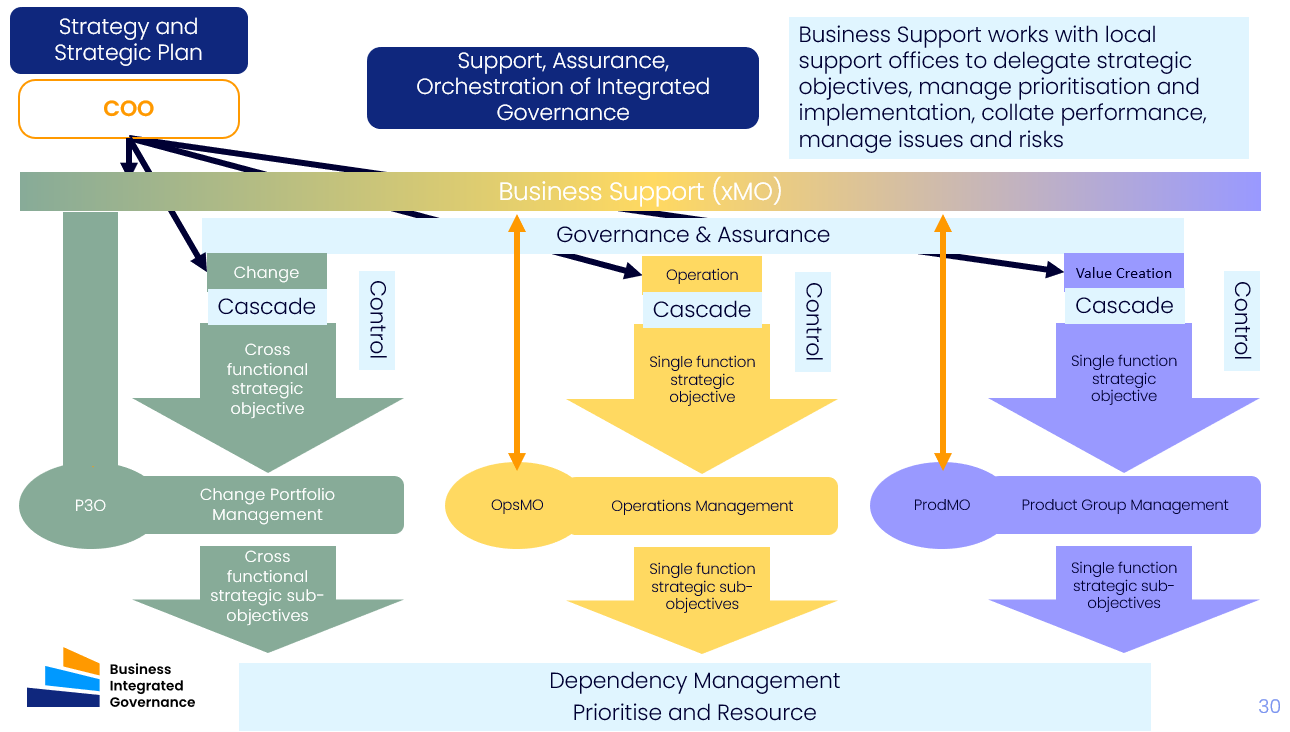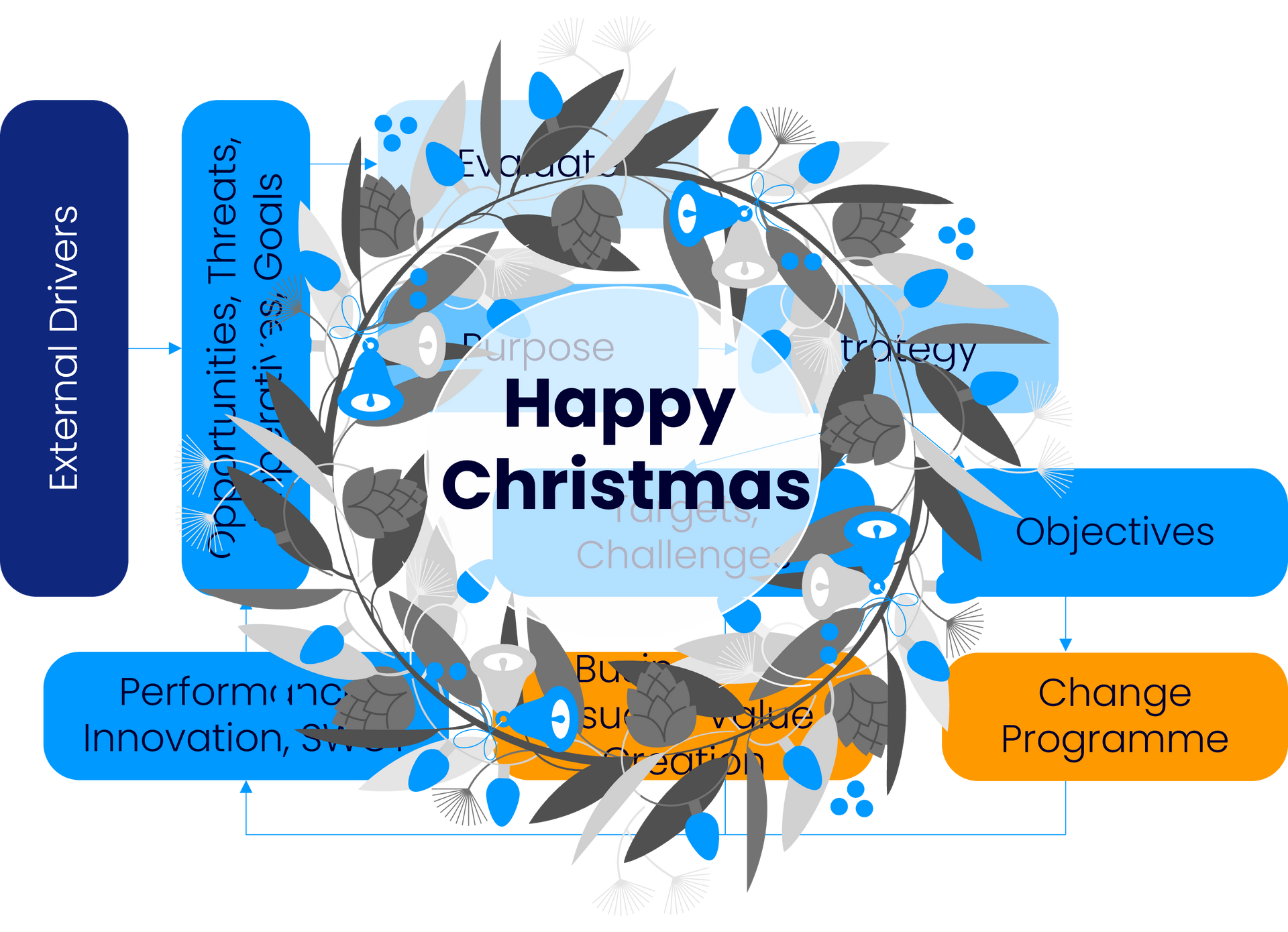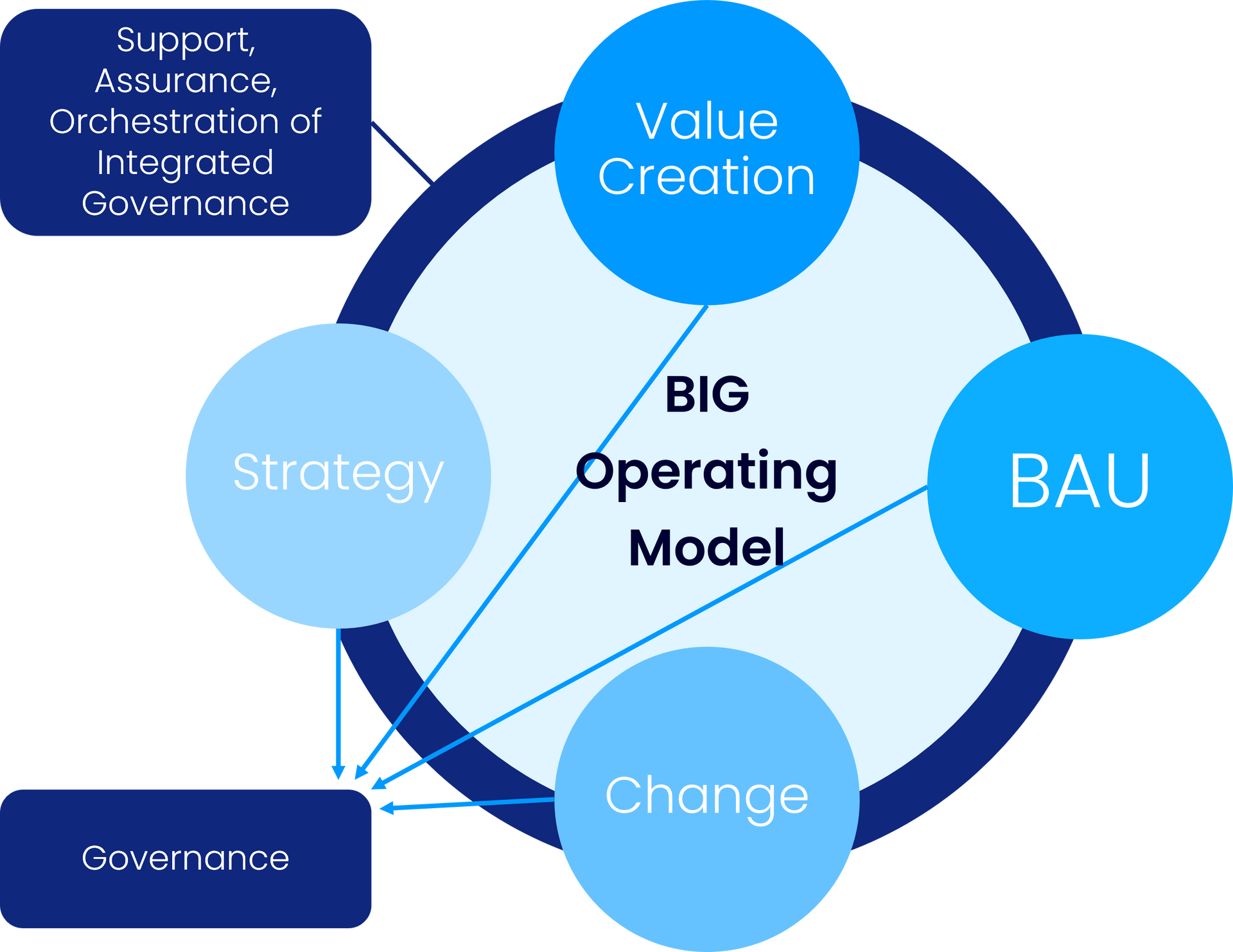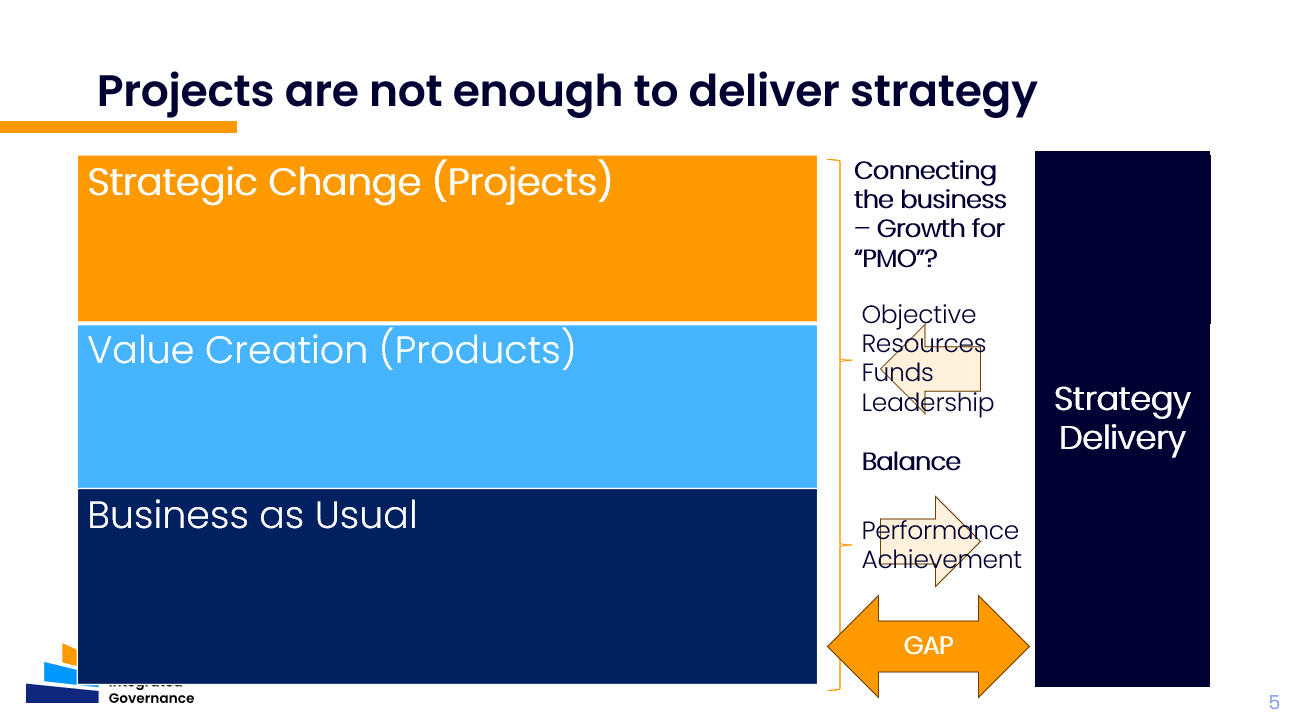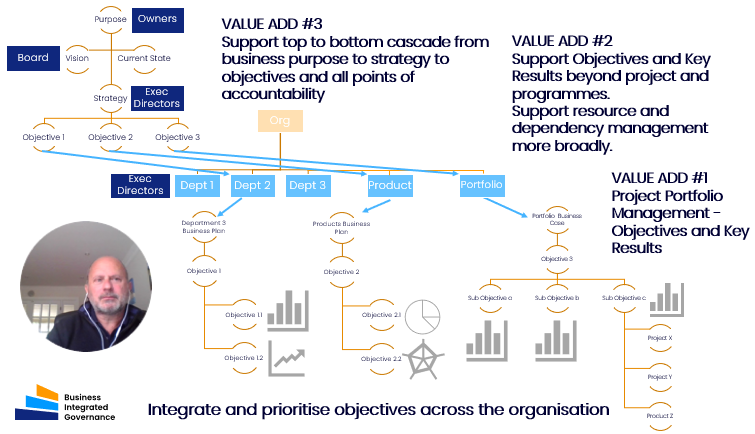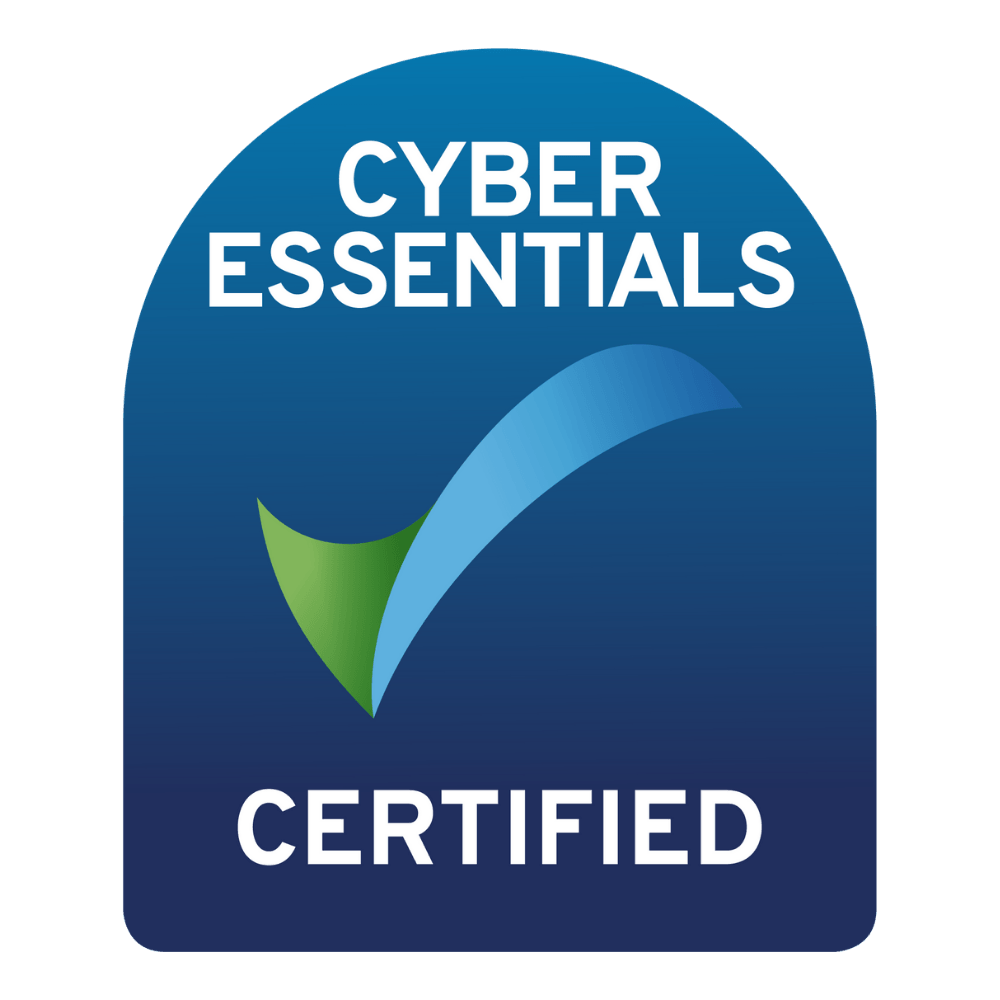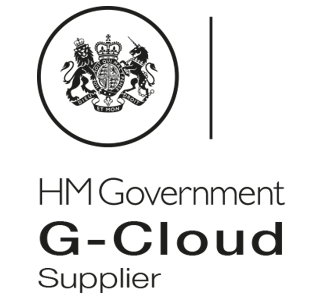The path to a Resilient world: an effective framework connecting Purpose, ESG and Project Delivery
Article prepared by:
David Dunning – lead author, Business Integrated Governance
On October 10th
the PMI hosted "PM4TheWorld Conference".
It was organized by an international volunteer network who care about the world and the people living in it. The aim was to help those affected by disasters, whether man-made or natural, regardless of their race, culture, or religion. Their mission was to initiate, back, and promote events supporting all people impacted by ongoing or unique situations in partnership with not-for-profit organizations that share our objectives.
Within the conference David and
Alex Shapley presented on a broader perspective than on the tactical responses for specific adverse events. Our presentation came from the starting point that ALL organisations need to have the will and ability to provide response to environmental and social challenges from the basis of their key stakeholder worldviews, and their own, wider organisation purpose. Our proposition was that the path to a Resilient world is contributed to by organisations which care about sustainable wellbeing for all humanity, have the ability to transition this into their strategies, and the means to prioritise all objectives for leadership time, funds and resources. Hence - 'doing good' is not just a downstream activity to be fitted in or sacrificed - it is instead baked into the organisation governance framework.
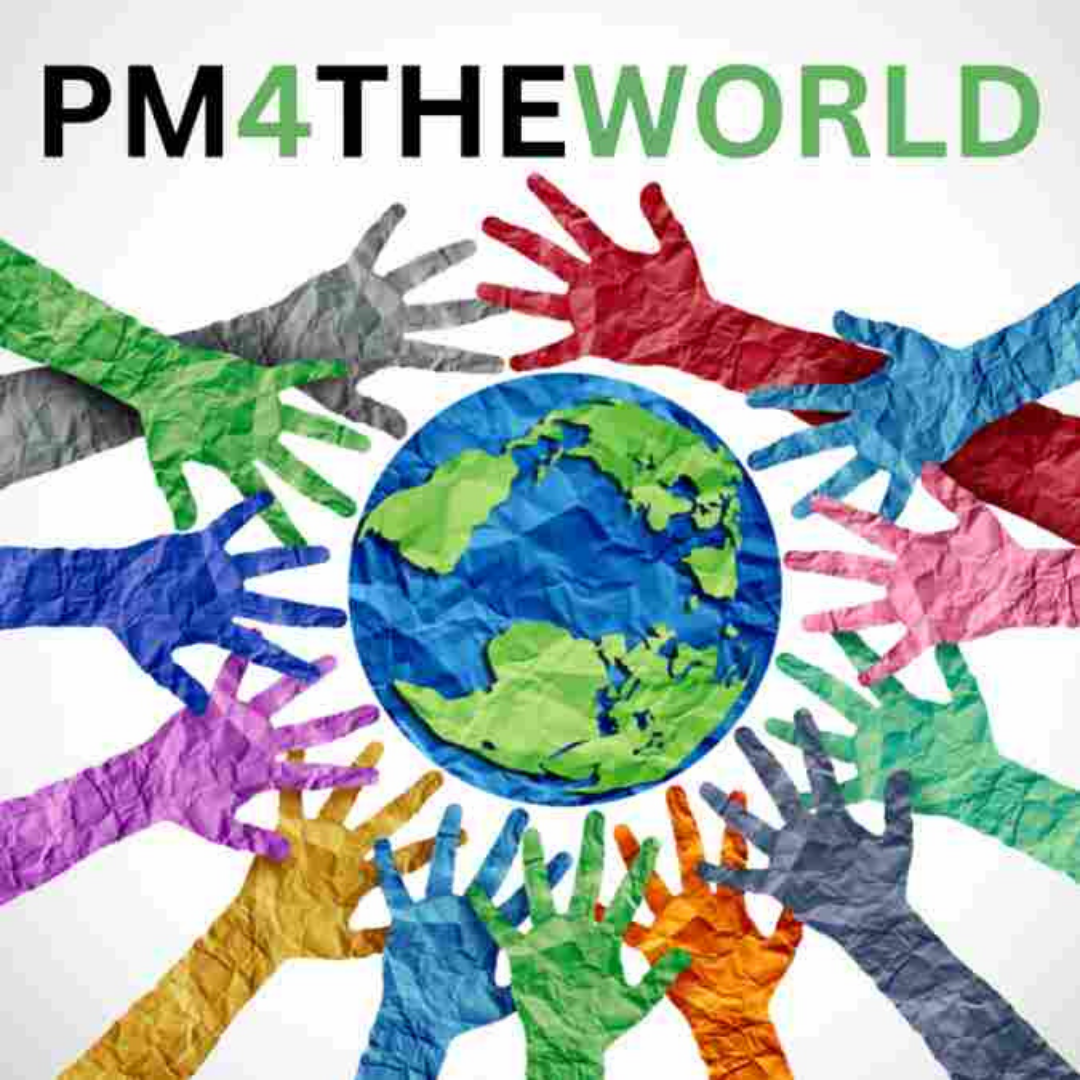
This presentation explored the critical role Project and Programme management plays in achieving socially and environmentally positive outcomes in a sustainable manner.
It suggested that the responsibility for driving these outcomes should not rest solely with project managers. Project managers are responsible for delivering outputs and outcomes rather than setting direction, and while they may be guided by personal values, they must adhere to their host organisation goals.
The key to achieving sustainable well-being for humanity lies in creating an environment where projects are inherently expected to deliver socially and environmentally positive outcomes.
The Problem - 1
The problem is of course that many of our organisations are commercially driven. They say they want to be purpose-driven and supporting of environmental and social activity - but only to a point. Self-interest motive leads to focus on capturing financial income. It is difficult to depart from the 1970s based business philosophy.
Quote 1 - It is said that “as long as an organization is operating in their own financial or survival interest, staying within the law and engaging competitively in the market, then market will automatically optimize society’s wellbeing.”. Many of us believe this is nonsense.
The best many of us can so is offer tactical responses through corporate social responsibility (CSR) programmes. A notable starting point is an ESG (Environmental, Social, and Governance) framework aimed at managing non-financial risks and opportunities within organisations. However, simply adopting ESG practices is not enough, as organisations, which remain driven primarily by financial motives must decide to also make socially and environmentally positive goals a priority.
Quote 2 - “These tend to result in an ad-hoc series of actions which do good and may be comprehensive”… “but remain peripheral to the operation of the business.”
Data Backing us up.
As part of the presentation, we asked our audience 3 questions about how their environmental and social workloads were driven. Do they:
a. Hope workloads (projects, products, operations) do the right Environmental & Social thing?
b. Define programmes for Environmental & Social Goals that fit in with business priorities?
c. Include strategic objectives and provide business constraints that build Environmental & Social Goals into normal operation?
We also asked this to a wider PMI LinkedIn Group post - and the 172 responses from 16763 Impressions were split:

45% - People doing the right things, 23% - Corporate ESG Programmes and 32% - Purpose is built into strategy
While hugely unscientific this suggests that the largest proportion of people asked are in organisations where environmental and social goals are not part of the organisation Business as Usual and rely on individuals.
The Answer - 1
The solution lies in embedding ESG goals into the very Purpose of the organisation itself. This approach, outlined in PAS 808 (Purpose Driven Organisations), emphasises the need to build business purpose, vision, and strategy based on social and environmental values.
PAS 808 guides governing bodies and executive managers on how to: “provide the basis for an organization to develop their own strategies and approaches to enacting and embedding purpose in their policies, processes, practices, products, services and value networks”.
However, having a great standard available does not solve anyone's problems.
The Problem - 2
If we can embed ESG goals into Strategy - what if we are not effective at strategy delivery?
There is plenty to suggest that our organisations are already not all that great at strategy delivery.
Our own events have gathered perspectives from many people, and Deepteam can re-run sessions privately to explore challenges for any organisation.
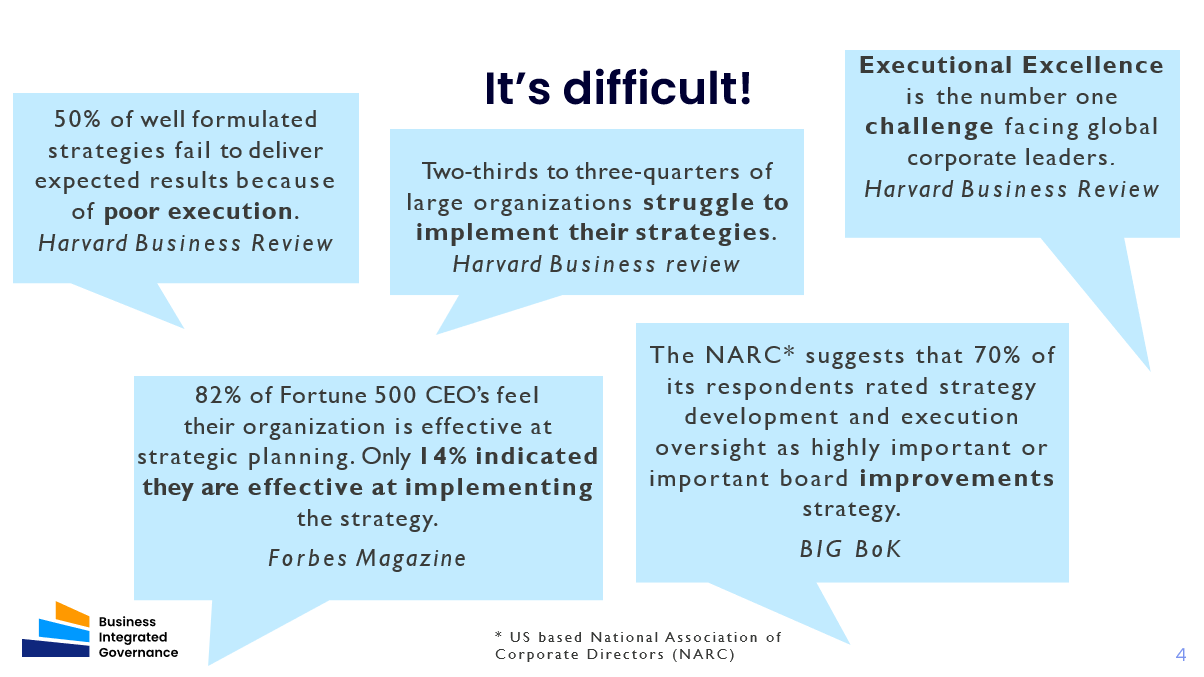
From amongst our audiences, we have found organisations which:
- Do nothing much more about strategy delivery other than state the strategy to aim for. Organisations that have developed 5-year plans and shared with shareholders in a pretty PDF file. Where department plans show little response to strategic expectations, and projects are tactical responses to the current problem
- Superimpose strategic programmes and expect them to achieve on top of the organisation workloads - leaving programme managers to scrap for attention, leadership time and resources with line managers primarily focused on their bonus driven targets
- Have a clear cascade of strategic objectives and manage balance between strategic change, operations and value creation
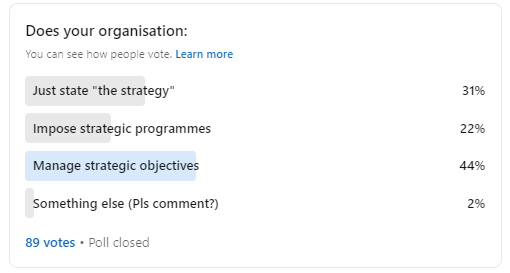
We also asked this to a wider PMI LinkedIn Group post - and the 85 responses from 12k+ Impressions were split:
31% - just stating strategy, 22% - imposing strategic programmes and 44% - manage strategic objectives
Again, hugely unscientific, but this suggests that well less than 50% of people asked are in organisations where strategy management is identified as something to actively manage of itself.
The Answer - 2
Business Integrated Governance (BIG) frameworks are necessary to hold organisations accountable for achieving these goals in a balanced manner. Within the BIG model, Purposes (including ESG goals) are not superficial, but integral to the organisation’s identity - akin to baking chocolate chips throughout a cake rather than simply sprinkling them on top.
For the organisations which
- Only have 5-year plans and shared with shareholders in a pretty PDF file, there is a vision and roadmap to get on top of strategy delivery
- Have strategic programmes, there is the pathway to leverage the governance capability of a change portfolio for the integration of business as usual, value creation and change strategic objectives.
- Have a manual cascade of strategic objectives to provide the operating model, information and data and support capability to drive strategic outcomes with agility, efficiency and effectiveness.
For more information - Access the
How Much Capability already exists?
There are 3 stereotypes which organisations can fall into:
- No formal strategy delivery building blocks or facilities. These are characterised by disconnected governance bodies, no integrated information infrastructures, no specific support function - and stressed executives trying to fight priority battles!
- Portfolio Management based. Characterised by focus on change portfolio, programmes and projects. There are facilities and controls to deliver outputs, outcomes and benefits. BAU and Product Teams are to be negotiated with to manage dependencies, allocate funds and resources - with constant alignment of projects to strategic objectives.
- Integrated Strategy Management. There is a clear cascade and integration of objectives through the organisation. It is clear which workloads are accountable for which objectives (change, value creation or BAU performance). Objectives have clear accountable owners and measures which indicate progress (not just time-based milestones), and priorities are objectively balanced based on their risk / value / priority.
What is your situation?
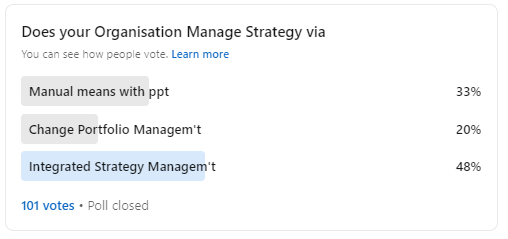
We also asked this to a wider PMI LinkedIn Group post - and the 85 responses from c.10k Impressions were split:
33% - manual means with ppt, 20% - change portfolio management and 48% - integrated strategy management
Again, hugely unscientific, but this suggests that 33% of people are managing strategy by manual means with presentation slides.
According to simple polling, large numbers of us are relying in individuals to drive E&S Goals, manage strategy by just stating it, and use PowerPoint to manage with.
While many have some aspects to strategy delivery better organised, it does appear that many of us lack fundamental strategy management capability with which to push our Environmental and Social goals for a "Purpose Driven" organisation into reality.
Back to the Resilient world message
For project management, rather than hoping project managers do the right thing, the BIG framework is provided to ensure socially & environmentally responsible outcomes are prioritised (suitably) from the outset with a shift in culture and governance surrounding projects to:
- adhere to ESG guidelines
- build into the prioritisation approach mechanisms to take account of the project’s ESG goals
- establish and maintain alignment to (all) cascaded ESG goals throughout the organisation (operations and change)
Can organisations commit to such a transformation or continue to only pay lip-service to sustainability?
Messages for Stakeholders
- Dear project managers
Within your organisation, if you don’t have a prioritisation framework connected to strategy – are you ever going to get the support and recognition from the top (to be able to finish an ESG project without delay, scope change and/or cancellation)? Think about it…?
- Dear portfolio managers
How are you ever going to be able to prioritise, measure, report drive workloads to achieve E&S Goals if there is only a Finance / ROI based approach to prioritisation? Time to come out of the ‘70s….?
- Dear executives (c-suite) -
How do you prioritise E&S Goals across competing priorities in run and change and communicate through the business? Who is providing the status on E&S Goals if there is no infrastructure to provide it? - How much do your investors care….?

Useful Links
Call to Action
Book this presentation privately for your organisation to highlight the challenges and benefits of a purpose-driven approach, questioning whether organisations can commit to such a transformation or whether they will continue to only pay lip-service to sustainability. The audience will be encouraged to reflect on their ability to influence their organisations towards adopting this integrated, resilient approach within which project management for the Resilient World can flourish.
By attending this session, you will gain insights into the key issues impacting strategy delivery and learn how to elevate your role in driving organisational success. This is an opportunity to connect, discuss, and share best practices on how to bring strategy to life through effective governance - and by so doing become more able to
care about the world and the people living in it.
Who should attend?
- Strategic leadership who want to see effective strategy delivery and are inspired to ensure their organisation plays its part in assuring the sustainable wellbeing for the whole of humanity
- Operations and finance directors who want to see funds / resources deployed in line with strategic priorities and do the right thing where it comes to prioritising deployment of leadership time, funds and resources
- Governance Professionals who want to see effective decision making, application of policy and process to strategy delivery including ESG goals and constraints
- Transformation leads who want to fit their delivery and change workloads into a prioritised (funded and resourced) business operation
- PMO/P3 Directors to cannot see how ESG strategy is driving change or how projects are enabling ESG strategy
- PMO Leaders who are struggling to support strategic projects and programmes
- More stakeholder profiles here
What next?
Please watch for blogs and mini events in the run up to the session. To be notified of the Blogs and online discussions around the event - please register for Alerts below:
This session was originally part of:
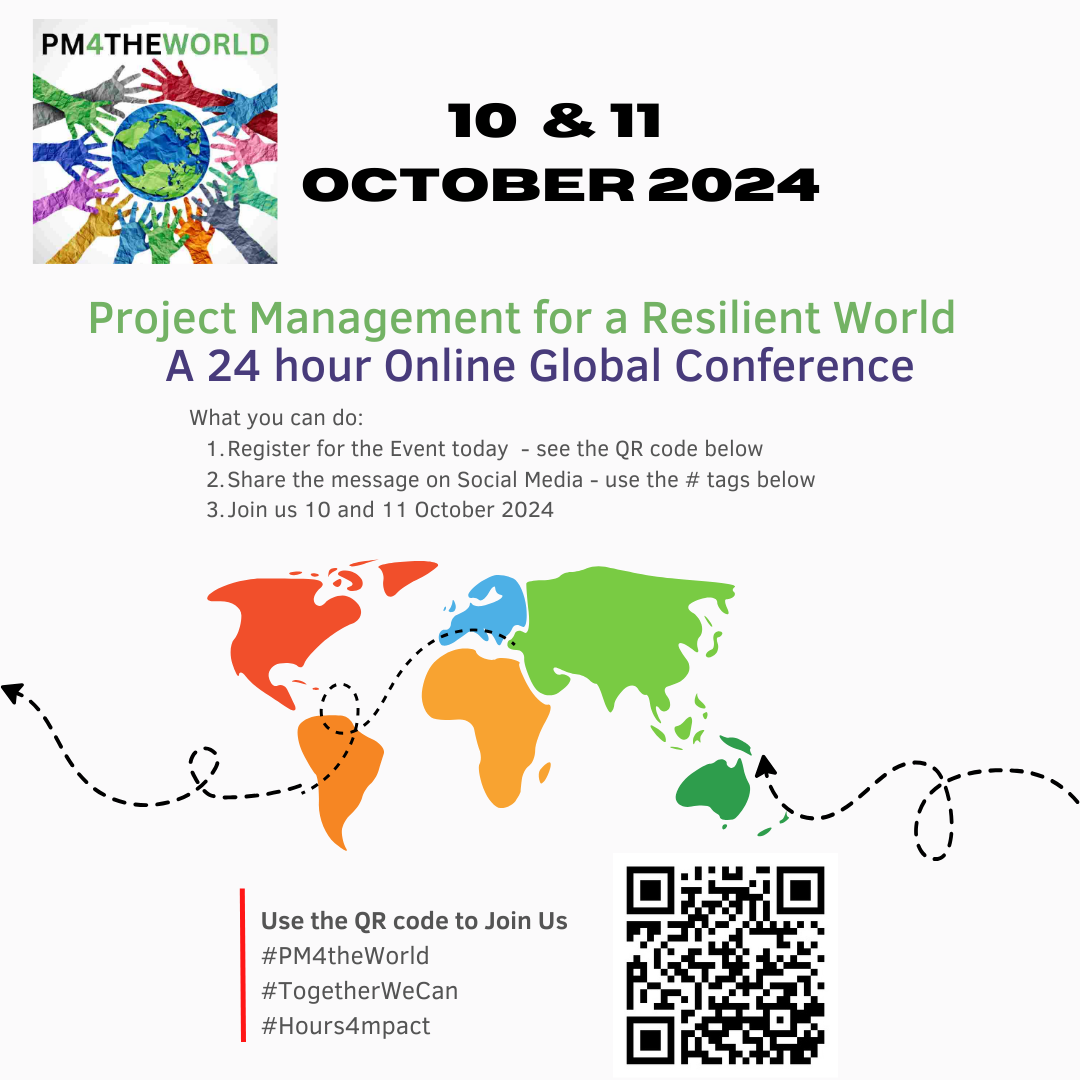
PM4TheWorld - Project Management for a Resilient World - A 24-hour Global Online Conference October 2024
Imagine a world where an extensive network of professionals builds a community that is aware, prepared, and supportive of those in crisis. A chance for individuals to contribute and feel a sense of purpose.
PM4theWorld was founded in 2023 to meet that goal. We work with our sponsors, Project Management Institute, Care International, and Project Managers without Borders, among others, to build a community with a purpose and deliver our unique skills to the regions in crisis today.
Join us at the PM4TheWorld annual 24-hour global online event and stay connected with us year-round through our active presence on YouTube and LinkedIn.
We welcome you to be a part of our global community committed to making a difference. Together, we can support those in need. Together We Can!
Enablers
- Clarity of Purpose(s)
- Strategic Process
- Integrated Governance Framework
- Information and Data Capability
- Business Support - to operate the Strategic Process and Integrated Governance
Technology
- Corporate RAID
- Document Library
- OKR Platform - Viva Goals
- Prioritisation tools
- Milestone Planning
- Resource Planning
- Finance Planning
RAID - Risk, Action, Issue and Decision
OKR - Objective and Key Results
Culture Change
- Current State Assessment - of current capability
- Periodic Review of Purpose, Business Drivers
- Enabled people
- Working Strategy Operating Model
- Adopted Strategy Information Model
- Operation of Integrated Governance
- Fair Accountability

